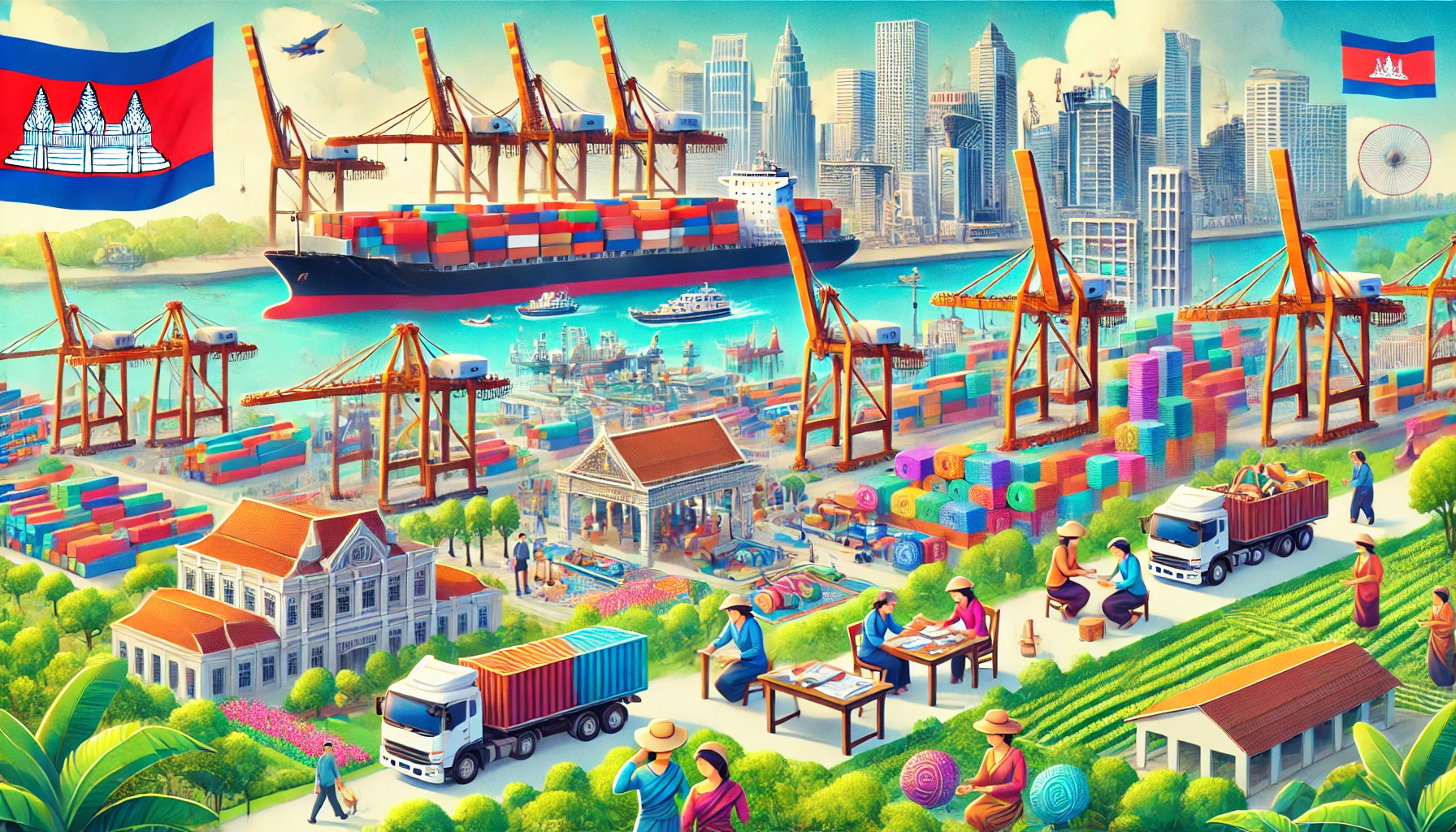A recent report from the World Bank titled Cambodia’s Regional Connectivity: Unlocking the Full Potential of Transport Corridors, underscores the critical challenges facing Cambodia's transport sector and outlines key investments and policy measures to improve regional connectivity. The report emphasizes the importance of enhancing Cambodia's transport links with its neighbouring countries, positioning the nation as a key player in regional trade and supply chains.
H.E. Peng Ponea, Cambodia's Minister of Public Works and Transport, stated, “Regional connectivity and logistics development are Cambodia’s top priorities; strengthening our capacities will be key. These efforts can help position Cambodia as one of the key players in regional connectivity, boosting trade along global supply chains.”
The Cambodian government’s vision for improving transport infrastructure is embodied in the Comprehensive Intermodal Transport and Logistics System (CITLS) Master Plan, which spans from 2023 to 2033. This plan is designed to enhance the performance and efficiency of Cambodia’s transport sector while supporting the national development objectives outlined in its Pentagonal Strategy Phase 1. The World Bank’s report provides a complementary set of recommendations, focusing on investments and policy actions to unlock the full potential of Cambodia's existing transport corridors.
According to Tania Meyer, World Bank Country Manager for Cambodia, “The report brought together key stakeholders from the government, the private sector, and development partners to explore options to enhance Cambodia's transport sector and regional connectivity. A comprehensive approach to transport network development will help improve Cambodia’s competitiveness, unlock its export potential, and promote trade in the region.”
The report comes as Cambodia experiences increased demand for efficient goods transportation, driven by the country’s export-driven growth. Expanding and modernizing transport infrastructure is seen as critical to keeping pace with this demand, facilitating the smooth movement of goods and cargo across Cambodia's borders, and improving trade efficiency in the region.
Key Recommendations for Transport Infrastructure Development
The World Bank's recommendations focus on enhancing the performance of Cambodia's existing road, rail, and inland waterway transport systems. Among the priority areas identified are investments in multimodal transport solutions, improved connectivity between key economic zones, and the development of climate-resilient infrastructure. The report advocates for an integrated and coordinated approach that aligns the development of transport networks with national and regional economic goals.
In particular, it highlights the need to strengthen Cambodia’s existing road networks, improve rail services for freight, and further develop inland waterway routes to ensure smoother trade flows. These improvements are crucial for increasing Cambodia’s economic efficiency, boosting competitiveness in global markets, and enhancing the country’s export capabilities.
A Focus on Climate Resilience and Sustainable Growth
The report emphasizes the importance of making Cambodia's transport network climate-resilient. As climate change poses growing risks to infrastructure, particularly in developing countries, the integration of climate resilience measures into transport projects will be crucial to ensuring the long-term sustainability and reliability of the transport sector.
In line with the Cambodian government’s vision for sustainable economic growth, the World Bank suggests that future investments in transport infrastructure prioritize sustainability, reduce environmental impact, and promote the use of green technologies in logistics and transport operations. This approach aligns with global trends toward sustainability, ensuring Cambodia remains competitive in the rapidly evolving global supply chain landscape.
A Collaborative Approach to Strengthening Cambodia’s Transport Sector
The report also highlights the importance of a collaborative approach to transport development, involving the government, the private sector, and international development partners. Engaging stakeholders in meaningful dialogue will help identify innovative solutions to infrastructure challenges, promote investment in key transport corridors, and ensure the successful implementation of the CITLS Master Plan.
By unlocking the potential of Cambodia’s transport corridors and investing in the modernization and expansion of its transport networks, Cambodia can position itself as a vital hub in regional trade. The country’s strategic location, coupled with its ongoing efforts to enhance multimodal transport, will allow it to become an increasingly significant player in Southeast Asia’s economic growth and development.
As Cambodia looks to expand its role in the global supply chain, the World Bank’s report provides a roadmap for unlocking the full potential of its transport infrastructure and driving sustainable, export-driven growth.











